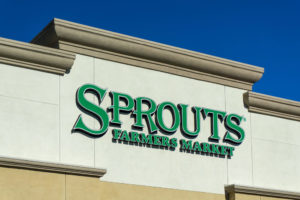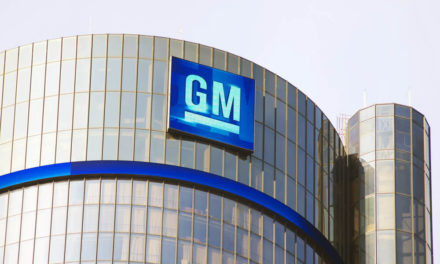Stocks of all flavors have become highly correlated in this environment of fear and uncertainty. But grocery stocks have been marching to the beat of their own drum.
It’s not hard to figure out why …
Grocery stores are essential. They’re one of the handful of businesses that have remained open during the countrywide coronavirus pandemic lockdown. And business must be good, since they’re also among the exceptional group of sectors that are hiring right now.
Of course, they’ve been forced to adapt to the post-COVID-19 world, like everyone.
Here in Miami Beach it’s mandatory to wear a face mask when grocery shopping. Employees must also wear masks.
Most of the stores have designated special shopping hours for senior citizens. And our local Publix has even designated one-way lanes, marked by big pieces of painter’s tape on the floor in the shape of arrows (that one’s a little silly, if you ask me).
Perhaps the most interesting trend to emerge from this crisis, as it relates to grocery stores, is actually the acceleration of a trend that was already underway prior to the pandemic: curbside pick-up and delivery service, which has been good for grocery stocks.
I’ll admit to using Instacart for grocery delivery a handful of times before the crisis. It always happened during a moment of weakness, when I felt I was just too busy (or was it that I was too lazy?) to do my own shopping.
But now, my wife and I are predominantly using the service for grocery delivery, as I’d rather not risk catching the virus … and it is really convenient.
The thing is, my parents and grandparents had never used either curbside-pickup or delivery service prior to the crisis. They either didn’t know it existed (my grandmother), or simply had plenty of free time to shop for themselves (my mother).
Now, both my mother and grandmother are using the services all the time. And they love it!
As an investment strategist, I’ve been hesitant to jump too quickly into just any “post-COVID world” trade. But I think the curbside and grocery delivery trend was already well underway before the crisis and could be a boon for grocery stocks. It’s clearly accelerating during this acute phase of the crisis … and, most importantly, I think it will continue to grow well after the worst of the crisis is over — that is to say, once we’re back into a “new” normal environment.
Plus, grocery stores don’t go out of business very often or easily.
So while oil companies and retailers and restaurants — and just about every business, regardless of sector or model — are under threat of the consequences that will come from the sudden and massive drop in revenues … grocery stores, with their low margins, high volume, “essentials” business model, will keep chugging along just fine.
A Grocery Stock to Watch: Sprouts Farmers Markets
 In fact, I recently recommended a play on Sprouts Farmers Markets (Nasdaq: SFM) to my Cycle 9 Alert readers (a premium service we’ll soon offer here on Money & Markets).
In fact, I recently recommended a play on Sprouts Farmers Markets (Nasdaq: SFM) to my Cycle 9 Alert readers (a premium service we’ll soon offer here on Money & Markets).
As I told Cycle 9’ers:
Sprouts operates 341 grocery stores in 22 states, with a focus on naturally fresh and healthful foods.
Its net profit margin of 2.7% is more than double the industry’s average, which is just 1.1%.
The company’s returns on assets, equity and invested capital are all significantly higher than its competitors.
And the grocery stock is even a good value, currently trading at a price-to-earnings ratio of 16.
Sprouts has scheduled a Q1 earnings call for May 5. And while I can’t predict exactly what they’ll report — quantitatively or qualitatively — I expect the call to go a lot better than the Q1 earnings calls of, let’s just say 95% of all other public companies this quarter.
Just last week, Sprouts announced it has fully ramped up its curbside and delivery partnership with Instacart, which will bring these services to each and every one of the company’s 341 stores within the next couple of weeks.
Shares of the stock already made a plunging low during the first wave of panic-selling, dropping down to $14 before quickly boomeranging back above its 200-day moving average, at around $18.
Now, the stock is trading back at its 10-month high and working on a bullish breakout.
To good profits,
Adam O’Dell
• Adam O’Dell is the Chief Investment Strategist for Money & Markets and editor of Green Zone Stocks, Cycle 9 Alert and 10X Profits.




